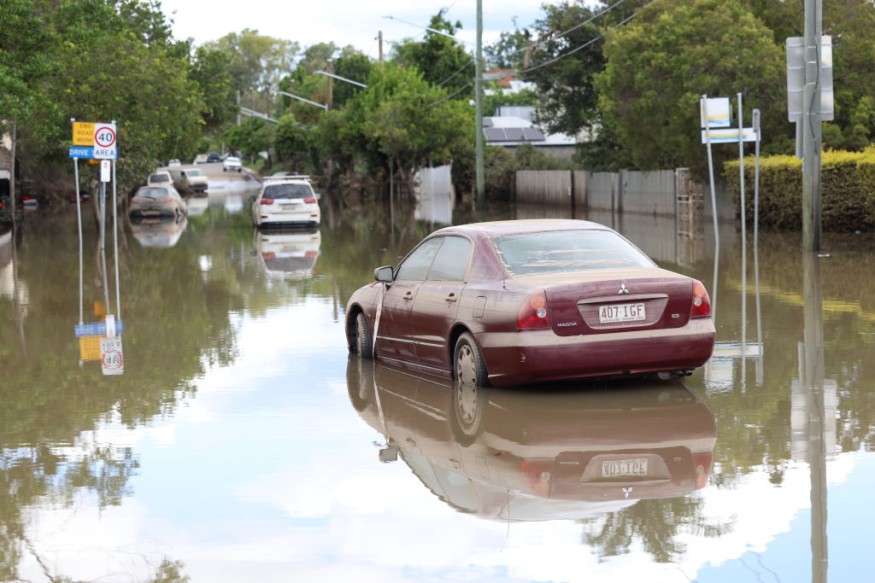Queensland Premier Annastacia Palaszczuk has described the recent rainstorms that have hammered eastern Australia as "unrelenting." Thousands of homes have been inundated, evacuations have been ordered, and at least seven people have died due to the incessant rains.
📷 These pictures show the impact the intense rain and flooding is having across Queensland.
— Annastacia Palaszczuk (@a_palaszczuk) February 26, 2022
Please stay safe, Queensland. pic.twitter.com/JwYZBklEf2
Brisbane, Queensland's capital, has been particularly severely affected. The city's wettest three-day period since weather records began in 1840 - an incredible 24.1 inches (611.6 mm) of rain falling from Friday morning to Sunday evening local time. The previous three-day rainfall record in the city was 23.6 inches (600.4 mm) in 1974.
Affected Areas
Few localities were spared from the storm, with scenes of drowned automobiles typical throughout the region. According to Reuters, more than 1,400 homes in Brisbane are at risk of flooding, and tens of thousands of power outages have been reported.
On Monday, schools across the region will be closed, and officials have recommended locals to work from home to reduce the number of people on the roads, which are in some cases entirely impassable due to high water.
Those who venture out amid the bad weather received a strong message from local officials.
"Our advice is clear: don't cross flooded roadways - if it's flooded, forget it; the smartest and bravest thing you can do is back up and turn around," the Queensland Police Service tweeted.
Related Article : Exposure to Major Disasters Can Cause Long-Term Mental Health Problems
Water Flows
The flow of water flooded local rivers, causing significant flooding in several. According to the Brisbane Times, the Brisbane River is expected to crest at roughly 13 feet (4 meters) on Monday morning, local time, which would be the highest level seen on the waterway since 2011. According to the news agency, the roaring water washed debris into the river's boardwalks and cafés.
According to the Australian Government Bureau of Meteorology (BoM), major flood levels peaked on the Brisbane River during high tide on Monday morning, local time, at 12.63 feet (3.85 meters).
On the river, a terrifying picture unfolded as wild floodwaters carried a houseboat and slammed it into a ferry dock, forcing it to sink instantly. A 70-year-old man on board was rescued with no serious injuries.
This tragedy has brought memories and comparisons to the January 2011 floods in Brisbane, which wreaked havoc and killed more than 30 people. Heavy rain fell over more than a week during that event, and flooding was mostly caused by rivers expanding after the rain had stopped, according to The Guardian.
Torrential Rainfall

Significant rainfall occurred in this most recent occurrence over a considerably shorter time. The Brisbane Times reported that Murrumba Downs, a northern suburb of Brisbane, received 2 inches (52 mm) of rain in 30 minutes, while adjacent Kippa-Ring received 5 inches (135 mm) in 90 minutes.
AccuWeather meteorologists warn that the dangers are far from ended as the torrential downpours spread southward this week.
"To begin the week, torrential downpours turned southward, putting northeastern New South Wales in the direct path of severe flooding," Meteorologist Mary Gilbert noted.
The city of Lismore in New South Wales saw historic flooding on Monday as hefty rain caused a levee, which was built to safeguard the city from catastrophic flooding, to overflow. According to the Bureau of Meteorology, Monday's flood level in Lismore is now the worst of all time, surpassing measurements from the previous record flooding event in February 1954.
As terrifying video obtained in the area captured water levels approaching the second floor of local shops, roadways in downtown Lismore turned into raging rivers.
Rescue Operations
Emergency personnel had completed roughly 550 rescues and received over 1,500 pleas for help as of Monday afternoon. According to 9News, as darkness fell on Monday evening local time, 400 individuals in the Lismore area were unaccounted for as military and emergency services raced against the clock to save lives.
According to the Bureau of Meteorology, at least two other levees in northeastern New South Wales overflowed on Monday. At least one more levee is in danger of being breached early Tuesday.
By the middle of the week, severe rains may have reached Sydney's metro area, increasing the risk of floods. A fast-moving current swept through Dee Why Lagoon, just north of Sydney, early this week, nearly dragging one man out to see if it hadn't been for a heroic bunch of surfers who came to his rescue.
For more climate and weather updates, don't forget to follow Nature World News!
© 2025 NatureWorldNews.com All rights reserved. Do not reproduce without permission.





